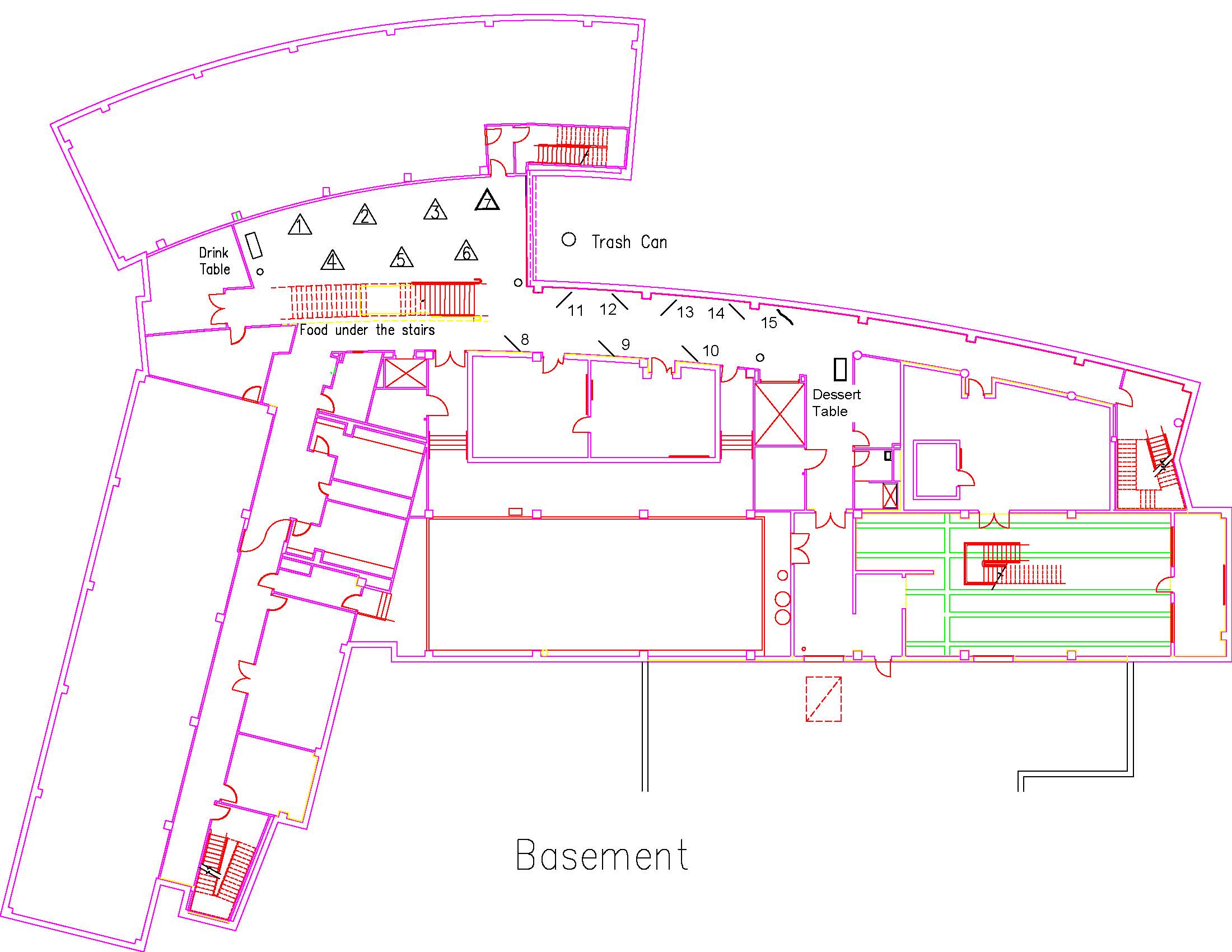PSYC2019GUARINO44570 PSYC
Role of the Central Amygdala in Loss-induced Emotional Self-medication
Type: Graduate
Author(s):
Sara Guarino
Psychology
Shannon Conrad
Psychology
Mauricio Papini
Psychology
Zach Wade
Psychology
Advisor(s):
Mauricio Papini
Psychology
Location: Session: 2; Basement; Table Number: 12

View PresentationThe present experiment was designed to explore the role of the central amygdala (CeA) in the hypothesized neural circuit underlying reward loss, and its relationship with the emotional self-medication (ESM) hypothesis utilizing the DREADD technique to remotely control neural activity. Rats received intracranial infusion of inhibitory DREADDs to allow for transient inactivation of the CeA, obtained via systemic injection of clozapine N-oxide (CNO), the activator drug for DREADDs. Animals were exposed to a 32-to-2% sucrose downshift in the consummatory successive negative contrast (cSNC) situation. After each cSNC session, animals were given simultaneous access to ethanol and water in a 1-h, two-bottle preference test. During the preshift phase (sessions 1-10), animals had access to either 32% (32/CNO and 32/VEH) or 2% (2/CNO and 2/VEH) sucrose. During the postshift phase (sessions 1-15), 32% groups were downshifted to 2% sucrose, whereas 2% groups were unshifted. Prior to downshifted sessions 11-13, animals received an i.p. injection of either CNO or vehicle. At the end of the 15-day two-task behavioral paradigm, animals were tested on the open-field task for two consecutive days in alternate dark and light conditions. The results indicated that CeA inactivation prior to reward devaluation session eliminated the cSNC effect (32/CNO), a hint of ESM effect was present in animals that experienced the reward devaluation under normal CeA activity (32/VEH), but not in animals for which the CeA was inhibited (32/VEH), and open-field activity showed a trend, albeit nonsignificant, toward increased activity in animals with inhibited CeA activity (32/CNO). One important contribution of this experiment involves the use of the DREADD technique to achieve transient inactivation of brain regions. This approach produced behavioral consequences in the cSNC task similar to those obtained in previous research using lidocaine microinfusions. The results of this study suggest that the DREADD approach is a valuable method to manipulate neural activity to further explore the role of these brain regions in our hypothesized reward loss circuitry.
PSYC2019HUNSLEY5655 PSYC
Understanding the Adoptive Sibling Experience
Type: Graduate
Author(s):
Jana Hunsley
Psychology
Advisor(s):
David Cross
Psychology
Rachel Crawley
Psychology
Location: Session: 2; 2nd Floor; Table Number: 4

View PresentationResearch has explored the effects of adoption on the adopted child as well as the parent-child relationship in an adoptive family. However, little is known about the effects of adoption on the remaining members of an adoptive family—the adoptive siblings, defined as the biological children in families who adopted one or more children. The current study aims to examine the adoptive sibling experience in effort to understand a) the effects of adoption on this population and b) which, if any, precluding factors are related to these effects. Participants included adult siblings to at least one adoptee who completed an online survey about their family and experiences. The survey included items about family demographics, free-response items about specific adoption experiences, a measure of potential risk and protective factors created for this study, and assessments about sibling relationship quality and overall family functioning. Results revealed five emerging themes in the adoptive sibling experience: 1) “my adoptive sibling was the best thing to happen to our family,” 2) “it was a hard experience but has shaped me to be who I am today,” 3) “my adoptive sibling required all my parents’ attention and I was pushed aside,” 4) “I am like a second parent to my adoptive sibling,” and 5) “it was the worst thing to ever happen to our family.” Results also revealed that better family communication and greater siblings’ involvement in the adoption process are related to a more positive response to adoption, a closer relationship with the adopted sibling, and more positive views of the family system. Findings improve our preliminary understanding of how adoption affects adoptive siblings and imply that targeted interventions for adoptive siblings may be needed; however, more research is needed to better understand the factors involved.
PSYC2019THOMPSON33390 PSYC
Will work for alcohol! Reward value of alcohol in rats.
Type: Graduate
Author(s):
Joanna Thompson
Psychology
Mauricio Papini
Psychology
Advisor(s):
Mauricio Papini
Psychology
Location: Session: 2; 1st Floor; Table Number: 4

View PresentationWill work for alcohol! Reward value of alcohol in rats.
Joanna B. Thompson and Mauricio R. PapiniAbstract
The misuse of alcohol is a prevalent problem in the United States, contributing to an array of public health, social, and economic issues. It is estimated that over 16 million Americans each year receive a diagnosis of an alcohol use disorder (AUD) which contributes to an economic burden upwards of $249 billion (NIAAA, 2017). Previous research has shown that alcohol has rewarding properties which motivate organisms to engage in voluntary, oral consumption (Jupp et al., 2011). Although studies have provided evidence for decreased alcohol consumption in rodents, no studies to date have examined high concentration alcohol (upwards of 60%). We used a mixed Pavlovian-instrumental paradigm to train rats to self-administer solutions of 0, 2, 10, and 66% alcohol. Once oral self-administration was established, rats were switched to a progressive-ratio schedule of reinforcement where a greater response effort was required to gain access to each of the alcohol solutions. Solution presentation was switched between rats each day. Higher levels of behavioral responding to an empty sipper to gain access to the alcohol solution was indicative of the reward value of that particular solution. Rats exhibited similar breakpoints for each alcohol solution, though expended less effort for 0% (water). Future directions will involve antagonizing the orexin-1 receptor, which has demonstrated to decrease alcohol consumption (Anderson et al., 2014). A non-peptide selective orexin-1 receptor antagonist, SB-334867, will be administered prior to sessions of progressive-ratio alcohol self-administration to determine the effective dose (0, 1, 5, or 10 mg/kg) at decreasing self-administration of alcohol. These findings are relevant for developing an animal model of alcohol intoxication aimed at a potential clinical drug therapy for alcohol abuse.
Anderson, R., Becker, H., Adams, B., Jesudason, C., & Rrick-Kehn, L. (2014). Orexin-1 and orexin-2 receptor antagonists reduce alcohol self-administration in high-drinking rodent models. Frontiers in Neuroscience, 8, 33.
Jupp, B., Krivdic, B., Krstew, E., & Lawrence, A.J. (2011). The orexin-1 receptor antagonist SB-334867 dissociates the motivational properties of alcohol and sucrose in rats. Brain Research, 1291(1), 54-59.
National Institute on Alcohol Abuse and Alcoholism. (2017). Alcohol use disorder. Retrieved February 2019 from https://www.niaaa.nih.gov/alcohol-health/overview-alcohol-consumption/alcohol-use-disorders
BIOL2018ALENIUS27660 BIOL
Can Specialists Generalize? Diets of Texas Horned Lizards (Phrynosoma cornutum) in Small Texas Towns
Type: Graduate
Author(s):
Rachel Alenius
Biology
Advisor(s):
Dean Williams
Biology
Tamie Morgan
Geological Sciences
View PresentationThe Texas horned lizard (Phrynosoma cornutum) is considered a threatened species in Texas and Oklahoma, due to substantial range declines over the past several decades. Horned lizards are believed to be highly vulnerable to habitat alterations, due to extreme specialization on ants, particularly harvester ants (Pogonomyrmex spp.). I analyzed diets of Texas horned lizards from two small towns by identifying exoskeletons of prey items found in fecal pellets. I assessed dietary specialization by comparing diet to prey availability, based on pitfall traps and abundance of harvester ant colonies. My results found strong spatio-temporal variation with respect to prey abundance and consumption. Harvester termites (Tenuirostritermes cinereus) and big-headed ants (Pheidole spp.) accounted for over 70% of all prey consumed. Average consumption of big-headed ants was comparable to their abundance in pitfall traps, but consumption of harvester termites was much higher than their pitfall trap abundance. Consumption of harvester ants is strongly correlated with the number of harvester ant colonies within study sites and horned lizard home ranges. Dietary diversity and richness were positively related to the area of dense vegetation in sites and lizard home ranges. These results suggest horned lizards in these towns adjust diet in relation to prey availability, which is considered a characteristic of generalist predators. The superior nutritional value of harvester termites relative to similarly sized ants could explain the apparent lack of size-based prey preference in these horned lizard populations.
BIOL2018BRUNS38844 BIOL
Reproductive effects of early life stage thyroid disruption in the fathead minnow
Type: Graduate
Author(s):
Peter Bruns
Biology
Bethany Pierce
Biology
Mallory Seemann
Biology
Advisor(s):
Marlo Jeffries
Biology
(Presentation is private)Exposure to contaminants during development has the potential to cause adverse biological alterations that can persist through depuration periods and into adulthood. This study examined the effects of chemically induced, early-life-stage thyroid disruption on endpoints associated with thyroidal and reproductive function in the fathead minnow (Pimephales promelas). Fish were exposed to propylthiouracil (PTU) from 1 to 43 days post hatch (dph) to induce hypothyroidism. At the end of exposure, length and weight were measured and samples were taken for gene expression analysis. The remaining fish were transferred to un-dosed water and raised to maturity and, at 164 dph, a 21-day breeding assay was performed. At the end of exposure, fish exposed to PTU had significantly reduced length and weight indicating successful thyroid disruption. There were also significant differences in expression of several genes involved in the thyroidal and reproductive signaling systems. After maturation, there were no significant differences in any morphological variables. During the 21-day breeding assay, fish from the PTU exposure group had significantly reduced overall fecundity relative to controls. Based on data collected so far, it appears that this reduction in fecundity is due to either ovarian dysfunction or alterations in reproductive behavior. The results show that early-life-stage hypothyroidism can affect reproductive function later in life even after thyroid related endpoints have returned to control levels.